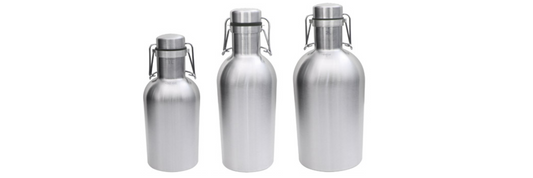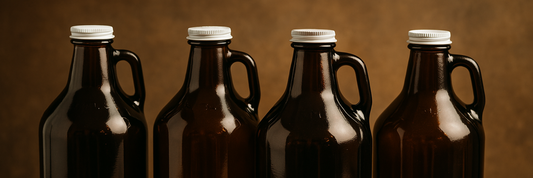In today's fast-paced world, the humble lunch bag has emerged as an essential tool for maintaining a healthy and balanced lifestyle. From traditional soft-sided carriers to insulated thermal bags, these versatile accessories have evolved to meet the diverse needs of modern consumers. In this comprehensive overview, we will delve into the various types of lunch bags, explore their benefits, and provide insights into selecting the perfect bag for your lifestyle.
- Eco-Friendly Bread Bags: The Best Sustainable Choices for Keeping Bread Fresh
- Paper Bread Bags vs. Reusable Bread Bags: Which Is Eco-friendlier?
What is Lunch Bag?
A lunch bag is a portable container designed to transport food and beverages. It is commonly used to carry meals to work, school, or on outings. Lunch bags come in various styles, sizes, and materials, ranging from simple soft-sided bags to insulated thermal carriers.
The primary function of a lunch bag is to maintain the temperature of food and beverages, whether hot or cold. Additionally, lunch bags help organize meal components and prevent spills, making them a convenient and practical accessory for daily life.

Types of Lunch Bag
Lunch bags come in various types, each with its own unique characteristics. Some of the most common types include traditional, insulated, backpack-style, and disposable bags. Let's explore these options in more detail.
Traditional Lunch Bag
A classic choice for everyday use, traditional lunch bags offer a simple and effective solution for carrying meals.
- Soft-sided lunch bags: Lightweight and flexible, these bags are easy to carry and come in a variety of styles and colors. They are ideal for packing smaller meals and snacks.
- Hard-sided lunch bags: Providing superior protection for your food and drinks, these bags often feature a rigid structure made of plastic or metal. They are perfect for keeping delicate items intact and maintaining temperature control.
Insulated Lunch Bag
Designed to keep your food and drinks at the desired temperature, insulated lunch bags are essential for maintaining food safety and freshness.
- Benefits of insulation: Insulated lunch bags help preserve the quality of your meals by preventing temperature fluctuations. This is particularly important for perishable items like dairy products and meat.
- Types of insulation materials: Common insulation materials include foam, neoprene, and vacuum-sealed panels. Each material offers unique benefits in terms of insulation performance and durability.

Backpack-Style Lunch Bag
Combining the functionality of a backpack with the convenience of a lunch bag, backpack-style lunch bags are ideal for those on the go.
Backpack-style lunch bags offer hands-free carrying and can accommodate larger loads. However, they may be bulkier and less convenient for shorter trips.
Disposable Lunch Bag
While disposable lunch bags offer convenience, it's important to consider their environmental impact.
- Single-use disposable bags contribute to waste and pollution, making it crucial to minimize their use. For this reason, if you choose disposable lunch bag, consider the eco-friendly material like kraft paper instead of plastic.
- Disposable bags may be a suitable option for occasional use, such as picnics or events where cleaning reusable bags may be difficult. However, whenever possible, opt for reusable bags to reduce your environmental footprint.
Benefits of Using a Lunch Bag
A lunch bag offers a multitude of benefits, from environmental sustainability to personal health and convenience.
Environmental Benefits
- Reduced waste from disposable containers: By using a reusable lunch bag, you can significantly reduce the number of disposable containers and plastic bags that end up in landfills.
- Conservation of resources: Reusable lunch bags help conserve natural resources by reducing the need for single-use plastics and paper products.
Health Benefits
- Encourages healthy meal planning: Using a lunch bag can help you plan and prepare healthy meals in advance, reducing your reliance on unhealthy and processed foods.
- Reduces reliance on unhealthy takeout options: By packing your own lunch, you can avoid the high-calorie, high-sodium, and often unhealthy options available at fast-food restaurants and convenience stores.
Financial Benefits
- Cost-effective way to pack meals: Preparing your own meals at home is significantly more cost-effective than buying lunch out every day.
- Potential savings on dining out: By using a lunch bag, you can save money on dining out, which can add up over time.
Convenience Benefits
- Easy to transport meals: Lunch bags are designed to be portable and easy to carry, making it convenient to transport your meals to work, school, or on the go.
- Keeps food fresh and at the right temperature: Insulated lunch bags can help keep your food at the optimal temperature, ensuring that it stays fresh and delicious throughout the day.

Choosing the Right Lunch Bag
Selecting the perfect lunch bag is essential for a convenient and enjoyable mealtime experience. Consider these factors to make an informed decision:
Factors to Consider
- Size and capacity: Choose a bag that can accommodate your typical meal size and any additional items you may need to carry, such as utensils, napkins, or snacks.
- Insulation level: If you need to keep your food hot or cold for extended periods, opt for a well-insulated bag. Look for bags with thick insulation and tight seals.
- Durability and material: Choose a durable bag made from high-quality materials that can withstand daily wear and tear. Consider factors like water resistance, easy cleaning, and the bag's overall construction.
- Style and design: Select a bag that reflects your personal style and preferences. Consider factors like color, pattern, and additional features like pockets and compartments.
- Price: Set a budget and compare prices to find a bag that fits your needs and budget.
Tips for Selecting a Lunch Bag
- Prioritize functionality: Consider your specific needs and choose a bag that meets those needs.
- Look for quality materials: A high-quality bag will last longer and perform better.
- Consider additional features: Look for features like leak-proof liners, adjustable straps, and external pockets for utensils.
- Think about your lifestyle: If you're an active person, a backpack-style lunch bag may be more convenient. For a more casual lifestyle, a soft-sided bag may suffice.
- Clean regularly: Regularly clean your lunch bag to prevent the growth of bacteria and maintain its freshness.
Conclusion
Lunch bags offer numerous benefits, from environmental sustainability to personal health and convenience. By understanding the different types and choosing the right one for your needs, you can enhance your daily routine. So, the next time you pack your lunch, remember the power of a good lunch bag.









